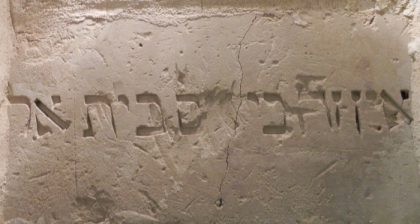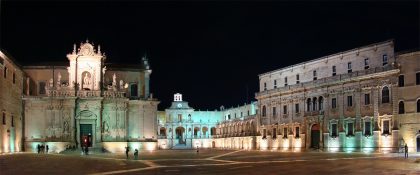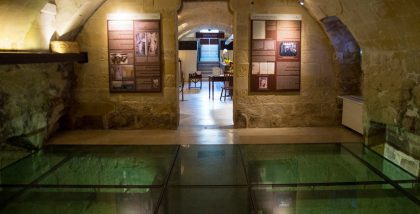Few people know it, but the Jewish Museum of Lecce is built in the area where the Jewish community was located in the Middle Ages. A look back at the ancient history of Lecce and a discussion of the museum’s plans and ambitions with Fabrizio Lelli, Associate Professor of Hebrew Language and Literature at the University of Salento

Jguideeurope : Can you tell us how the museum was created?
Fabrizio Lelli : The Jewish Museum of Lecce (hereafter the JM) was opened in May 2016. The project started from the initiative of private investors who aimed to cast light on a little-known piece of local history. Unlike most Italian cities, Lecce seems to have erased every trace of its Mediaeval past. In spite of the almost total absence of material testimonies, archives document the significant role played by Jews in Lecce over ten centuries, when the town was an important centre of economic and intellectual activities.
The Jewish community was among the most vital groups that populated Mediaeval Salento: a copious and strongly rooted presence since the beginnings of the Jewish Diaspora in Western Europe dating to Roman times. Throughout the Middle Ages Jews played significant social roles – particularly from the 14th century onward, when they settled in the district where the Museum is currently located.
The project is constantly growing and, thanks to the help of those who believe in it, the Museum has become a cultural centre that organises events and exhibitions addressing both locals and international visitors. We focus on Jewish identity and intercultural dialogue from the past to the present. School teachers and students are welcomed to attend seminars, in-depth workshops, temporary exhibitions and theatre performances.

Are there educational projects proposed by the museum and how is the city of Lecce participating in the sharing of Jewish culture?
Since its opening, the Jewish Museum has always offered to locals and non-locals a wide range of educational projects including historical itineraries, guided tours, and workshops aimed at students of primary and secondary schools. Our activities, varying according to the age of the participants, aim to develop an engaging and stimulating approach to the knowledge of the Jewish history, traditions and culture of our territory. Most recently, the JM added to its educational offer the virtual reproduction of the ancient Jewish district of Lecce. By means of visual technologies, visitors can immerse themselves in Mediaeval Lecce and take a virtual stroll in the ancient Jewish district.
Are you participating in this year’s European Days of Jewish Culture?
The Jewish Museum has always played an active role in the past editions of the European Day of Jewish Culture: we have organised art and documentary exhibitions, concerts, theatrical shows. This year, the JM proposes a rich calendar of events focused on the recently enhanced virtual tour experience.

Can you share a personal anecdote about an emotional encounter with a visitor or researcher during a previous event?
Working with visitors from around the globe offers us many emotional encounters, such as the many meetings with the descendants of the refugees that were welcomed in the DP Camps of Salento between 1945 and 1947. If I had to choose one, I would certainly mention the time when a local visitor shared with us a story about her grandmother. Even though she was Christian Catholic, she had the tradition of lighting a candle on Friday evenings, thus suggesting that in Lecce the traces of Jewish converts survive until nowadays. This is a demonstration of the important role played by our museum to revive the lost traces of a long forgotten community.